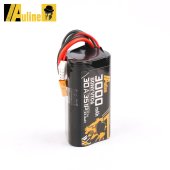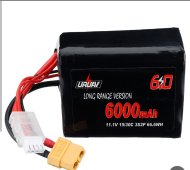I bought 16 LiPo4 cells 16 months ago but haven't charged them yet. They were stored in a air conditioned storage unit for 7 months then a shipping container that sometimes had the doors open but usually got hot inside for 5 months and then indoors for 4 months. They are 100 AH prismatic cells. What are the chance that they are still good? Would it be all right to combine them with 8 new cells for a 8S3P battery?
You are using an out of date browser. It may not display this or other websites correctly.
You should upgrade or use an alternative browser.
You should upgrade or use an alternative browser.
LiPO4 cells still good after 16 months?
- Thread starter Jet
- Start date
sunshine_eggo
Happy Breffast!
I bought 16 LiPo4 cells 16 months ago but haven't charged them yet. They were stored in a air conditioned storage unit for 7 months then a shipping container that sometimes had the doors open but usually got hot inside for 5 months and then indoors for 4 months. They are 100 AH prismatic cells. What are the chance that they are still good? Would it be all right to combine them with 8 new cells for a 8S3P battery?
8S3P = 24 cells, so no, but you could do 8S2P or 2P8S.
If they were stored at partial charge (30-50% preferred), and the container was less than ~110°F, then they are probably okay.
The more important question: What do the 16 voltages read?
meetyg
Solar Addict
- Joined
- Jun 4, 2021
- Messages
- 1,243
I would check them first...
Check voltages before charging, see if there are any cells with low voltage (2.5v or lower) or dead.
If they are OK, fully charge them slowly (I would go 0.2c or 20A). After reaching 3.65v. check voltages. They all should be at above 3.45v.
Then let them sit for a day or two and recheck voltages to see if they are able to hold the charge. They should still be in the 3.4v range (or at least 3.35v). If there are any cells that have a significant drop in voltage, they are probably degraded.
Check voltages before charging, see if there are any cells with low voltage (2.5v or lower) or dead.
If they are OK, fully charge them slowly (I would go 0.2c or 20A). After reaching 3.65v. check voltages. They all should be at above 3.45v.
Then let them sit for a day or two and recheck voltages to see if they are able to hold the charge. They should still be in the 3.4v range (or at least 3.35v). If there are any cells that have a significant drop in voltage, they are probably degraded.
I haven't checked the voltages. I don't think they shipped at a 100% SOC. I question was if I buy 8 more cells to add to the 16 for a 24 cell 8S3P battery. Originally this was it for a van. I bought what would fit in a small van. I'm putting this in a little house now. A 300 AH battery would make the max discharge rate under 0.5C with the 3kW inverter and DC loads. I was going to get a second inverter and an auto transformer for a split phase 240/120 system. Even though I don't have money for that now or the 32 additional cells I thought I needed to buy 16 for a 24V 600 AH battery. I decided to go with just one inverter for a few years. Later I'll get a split phase inverter in the 10-18kW range and build massive battery bank. I was wondering if it was an okay idea to mix the old cells with the new ones.8S3P = 24 cells, so no, but you could do 8S2P or 2P8S.
If they were stored at partial charge (30-50% preferred), and the container was less than ~110°F, then they are probably okay.
The more important question: What do the 16 voltages read?
meetyg
Solar Addict
- Joined
- Jun 4, 2021
- Messages
- 1,243
Well, that depends highly on cell's state. If they are degraded, I wouldn't parallel them with newer cells.
That's why I suggested to check them first. That way you will have some indication of thier state.
If they seem to be OK after testing, I think you should be good to go with combining them with newer cells.
Don't forget to do a proper top-balance for ALL of your cells. This will help to minimize problems in the future.
That's why I suggested to check them first. That way you will have some indication of thier state.
If they seem to be OK after testing, I think you should be good to go with combining them with newer cells.
Don't forget to do a proper top-balance for ALL of your cells. This will help to minimize problems in the future.
sunshine_eggo
Happy Breffast!
I haven't checked the voltages. I don't think they shipped at a 100% SOC. I question was if I buy 8 more cells to add to the 16 for a 24 cell 8S3P battery. Originally this was it for a van. I bought what would fit in a small van. I'm putting this in a little house now. A 300 AH battery would make the max discharge rate under 0.5C with the 3kW inverter and DC loads. I was going to get a second inverter and an auto transformer for a split phase 240/120 system. Even though I don't have money for that now or the 32 additional cells I thought I needed to buy 16 for a 24V 600 AH battery. I decided to go with just one inverter for a few years. Later I'll get a split phase inverter in the 10-18kW range and build massive battery bank. I was wondering if it was an okay idea to mix the old cells with the new ones.
Check them first. Typically they ship around 3.29V and around 25-50% SoC. Hopefully, that's your case.
In an 8S3P setup, that's three separate 8S batteries, each with their own BMS. Even if there is some degradation of the cells, I wouldn't see a problem with that arrangement.
But... testing is best.
If you had left them in the climate controlled conditions, I wouldn't have much concern... but that shipping container (I have one too... HOT!)...
It was Hawaii so it could be hotter but it did get warm during the summer. Should the cell nomenclature be 3p8s then I was going to make one battery out of them with one BMS.Check them first. Typically they ship around 3.29V and around 25-50% SoC. Hopefully, that's your case.
In an 8S3P setup, that's three separate 8S batteries, each with their own BMS. Even if there is some degradation of the cells, I wouldn't see a problem with that arrangement.
But... testing is best.
If you had left them in the climate controlled conditions, I wouldn't have much concern... but that shipping container (I have one too... HOT!)...
sunshine_eggo
Happy Breffast!
It was Hawaii so it could be hotter but it did get warm during the summer. Should the cell nomenclature be 3p8s then I was going to make one battery out of them with one BMS.
3P8S indicates 3 cells in parallel THEN 8 of those 3 cell groups in series.
Please check voltages.
meetyg
Solar Addict
- Joined
- Jun 4, 2021
- Messages
- 1,243
A bit off topic but:3P8S indicates 3 cells in parallel THEN 8 of those 3 cell groups in series.
Please check voltages.
I have always wondered what's the correct way to state series/parallel connections.
On hobby RC batteries, I have seen things like 3s1p or 4s2p. What they mean is either 3 or 4 cells in series, some with 2 cells in parallel.
But now your saying that the parallel part should come first...
Is there any formal source that can sort this out, or does the community just go with whatever is agreed on ?
In the OP's case, he means 3 cells in parallel. But I personally prefer this way of writing it: 8s3p. I think the series should always come first, if we're talking about a single battery.
If he was referring to 3 parallel batteries of 8s each, I would agree that 3p8s would be the correct phrasing.
Just a few examples:



Edit:
Just found this on Battery University:

Last edited:
Nobodybusiness
Solar Sponge.
Then what do you call 1 battery with 24 cells in a 24VDC configuration with 1 BMS?In an 8S3P setup, that's three separate 8S batteries, each with their own BMS.
3P8S?
I had 48 cells in a 48VDC configuration
It had 3 parallel cells acting as one cell with 16 of these in series with 1 BMS.
You call that a 3P16S?
Always called them 16S3P batteries.
It denotes the same thing just in reverse.
I Always put the series first so people would know what voltage it is.
Most manufacturers I have seen do the same thing.
Last edited:
sunshine_eggo
Happy Breffast!
Regardless of the RC conventions, you'll find that this site has been using the convention I described since its inception. Same convention with solar panels indicating order of arrangement.
8S3P = 8S first, then three of those in parallel.
3P8S = 3P first, then 8 of those in series.
8S3P = 8S first, then three of those in parallel.
3P8S = 3P first, then 8 of those in series.
Nobodybusiness
Solar Sponge.
It’s not just RC. ESS battery manufacturer use the same convention.Regardless of the RC conventions, you'll find that this site has been using the convention I described since its inception. Same convention with solar panels indicating order of arrangement.
8S3P = 8S first, then three of those in parallel.
3P8S = 3P first, then 8 of those in series.
Then what do you call 1 battery with 24 cells in a 24VDC configuration with 1 BMS?
3P8S?
It depends on the configuration. You wouldn't get a 24 volt battery out of a 24s configuration, that would be 36 volt which is an oddball but does exist.
My recommendation when implementing with cells from two very disparate purchases (and sketchy history) is to build 8s2p or two distinct batteries assuming you have 16 cells or 8s3p if you have 24 cells. The independent nature of the three batteries will allow the older cells to operate as they need to when charging.
I have a slightly similar situation in that I have eight cells that have been in use for two years and work great. This is 4s2p. I'm thinking of buying another four cells to add to the battery bank capacity. I will create a third distinct battery.
Nobodybusiness
Solar Sponge.
I didn’t say 24s.You wouldn't get a 24 volt battery out of a 24s configuration, that would be 36 volt which is an oddball but does exist.
I said 24 cells in a 24VDC config.
People are arguing 3P8S means something different than 8S3P.
All manufacturers list series first.
I didn’t say 24s.
I said 24 cells in a 24VDC config.
People are arguing 3P8S means something different than 8S3P.
All manufacturers list series first.
I'm just covering all the bases, just in case.
I agree that the nomenclature used to describe how cells are configured can be confusing.
XpYs: Around here, if there is Xp in front then you have X number of cells in parallel, then Y number of those sets of parallel cells wired in series.
YsXp: Y number of cells in series and X number of those cells as distinct batteries.
XpYsZp: is Z number of XpYs batteries.
Similar threads
- Replies
- 18
- Views
- 673
- Replies
- 2
- Views
- 442
- Replies
- 2
- Views
- 154


